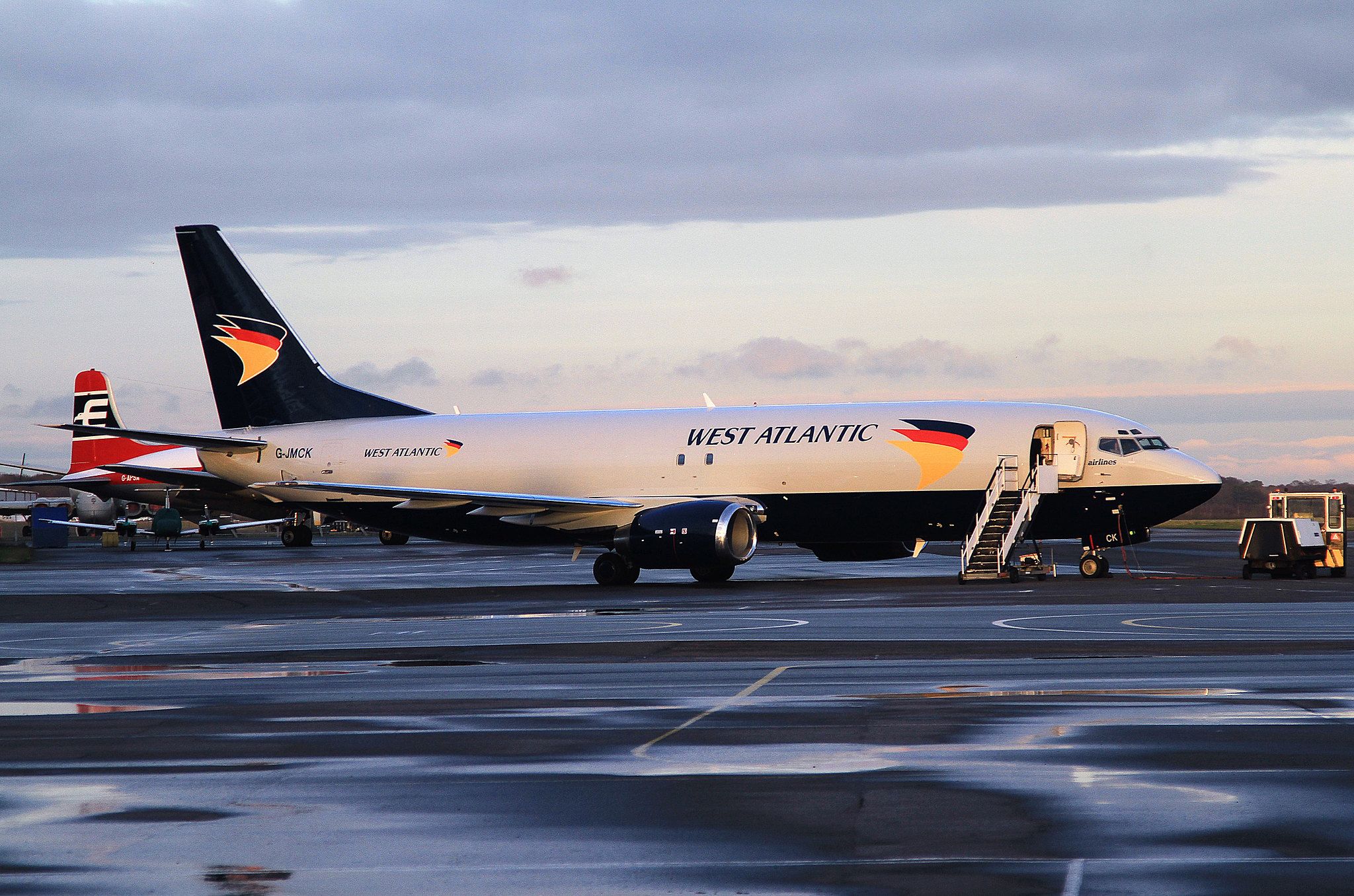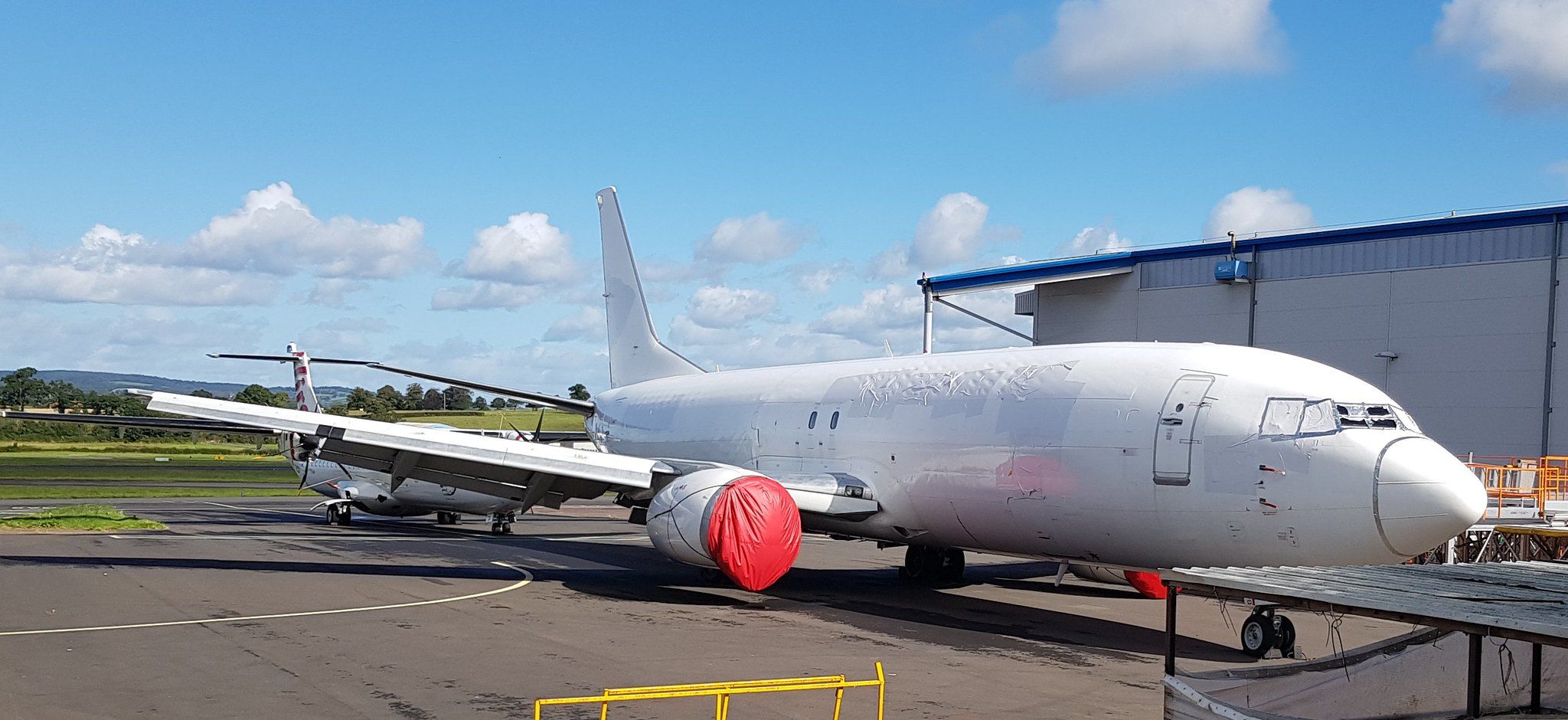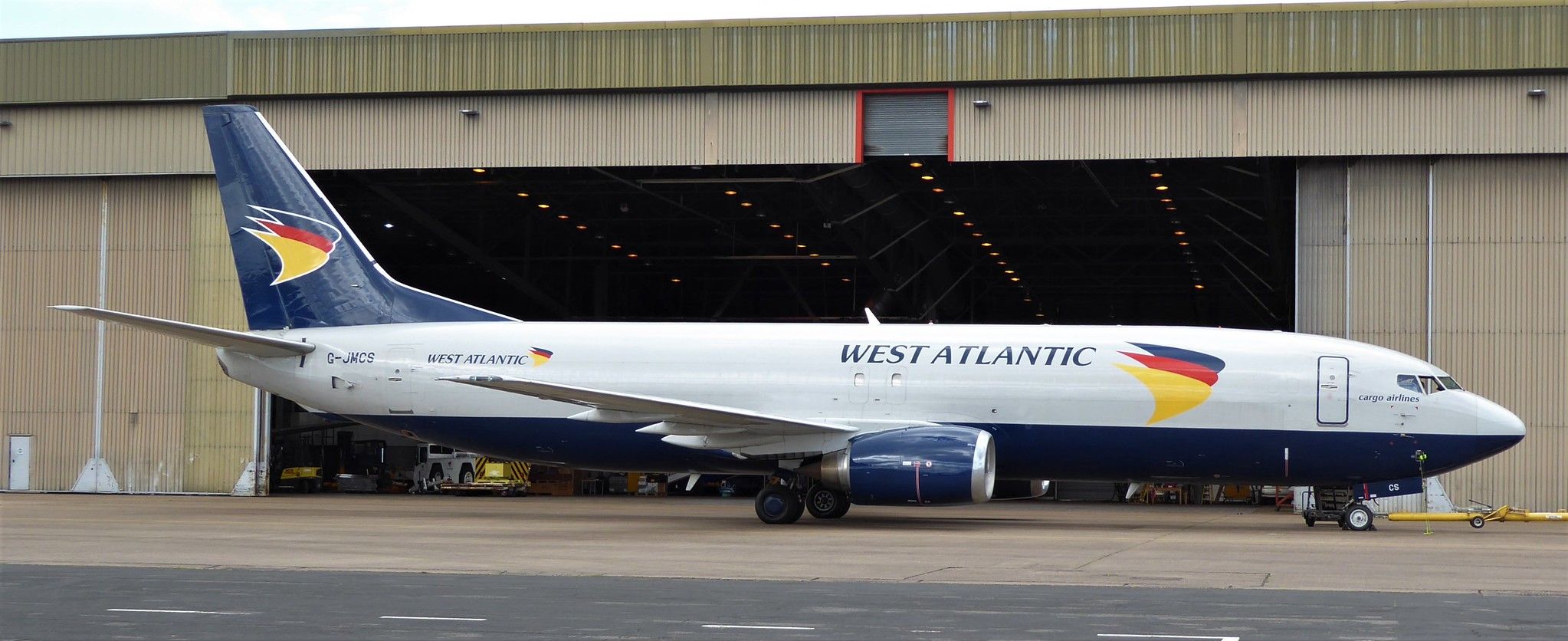British investigators have published their report into the hard landing that ultimately wrote off a Boeing 737 freighter at the UK's Exeter Airport (EXT) last year. The aircraft sustained considerable damage while landing on a cargo flight from East Midlands, and ultimately it could not be repaired. Let's take a look at the findings.
A quick recap
Before getting into the details of the report by the Air Accidents Investigation Branch (AAIB), it is important to understand the nature of the incident that warranted the inquiry. As Simple Flying reported at the time of the incident, the cargo flight involved originated at East Midlands Airport (EMA), with its destination being Exeter.
The 737 departed East Midlands at 02:01 local time on January 19th, 2021, and its flight was largely uneventful until its final approach, just over half an hour later. Following instability on approach to Exeter, the aircraft's touchdown at 02:37 was a very hard one, which caused significant fuselage damage in the form of creasing.
As seen above, the damage was particularly pronounced just behind the aircraft's wings, with indentations present on both sides of the aircraft. This had a knock-on effect concerning post in the area, as the flight's mail-based cargo couldn't immediately be unloaded. Now, over a year later, the final report has emerged.
Stay informed: Sign up for our daily and weekly aviation news digests.
The report's findings
Earlier today, the AAIB published an extensive 18-page report concerning its investigation of the flight's hard landing. It found that, on several occasions, the aircraft's approach was steeper than guidelines advised. The AAIB explains:
"During an ILS approach at Exeter Airport, the aircraft became unstable after the point where the crew had declared it stable and continued with the approach. During the final 500 feet, the rate of descent exceeded the required 500-ft stable approach maximum on four occasions."
In most instances, the crew was made aware of having exceeded this metric, but they continued flying nonetheless. The AAIB adds that "all bar the first of these excursions were accompanied by GPWS 'SINK RATE' alert." It concluded that attempting a go-around may have lessened the damage sustained, remarking:
"Despite high rates of descent being observed beyond the stable point, together with associated alerts, the crew elected to continue to land. Had the approach been discontinued and a [go-around] flown, even at a low height, while the aircraft may have touched down, the damage sustained may have been lessened."
The airline industry is always full of new developments! What aviation news will you check out next?
The aircraft involved
The West Atlantic plane that suffered the hard landing in question last January was a Boeing 737-400SF registered as G-JCMY. According to data from ch-aviation.com, it was 26.27 years old at the time of the incident, having entered service on a passenger-carrying basis with Alaska Airlines back in December 1994.
In June 2009, the aircraft transferred to Donavia, where it remained until October 2015. Following this, it underwent a conversion to allow it to be repurposed as a freighter, eventually joining West Atlantic in March 2016. Its flight to Exeter was its last, with the damage from the hard landing forcing it to be written off.
What do you make of the AAIB's report? Have you ever seen West Atlantic's Boeing 737s at your local airport? Let us know your thoughts and experiences in the comments!



